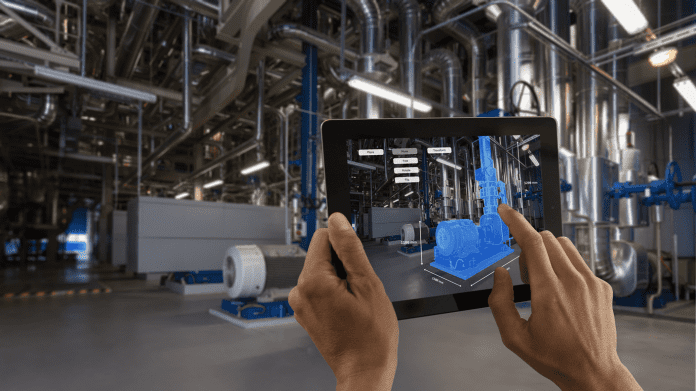For a deeper dive into the role of a digital twin in manufacturing, download this free report sponsored by Rockwell Automation.
Defining a digital twin
According to the precise definition of the Digital Twin Consortium, digital twins are “virtual models of a process, product or service that allow for data analysis and system monitoring via simulations” to make data-based decisions around maintenance, sustainability, efficiency and performance.
A white paper by Altran highlighted that companies in almost every industry are looking to digital twin technologies to drive meaningful business outcomes across the entire product development life cycle, from ideation and production to manufacturing, support and maintenance. Digital twins integrate geometry, real-time telemetry, engineering analysis, sensors, connectivity, artificial intelligence, machine learning and software analytics in a unified spatial model to create a living digital simulation that can update and change as their physical counterparts change.
“Most offer a virtual UI that let’s operators interact with the model in an immersive, intuitive, and often life-like way. And many can continuously learn and update themselves to represent its near real-time status, working condition or position or integrate historical data from past machine usage to inform trend analyses and diagnostics,” the Altran white paper states.
Altran also noted that digital twins are used to help companies improve a variety of business processes, from validating the expected behavior of a product or system design before it is deployed, to boosting production efficiency of a factory or optimizing the performance or maintenance of products in the field.
What can digital twin technology bring to smart manufacturing?
Specifically in manufacturing, digital twins could be created to focus on a single component within the manufacturing process or to focus on a single piece of equipment within a production line. Also, digital twins could be implemented at a manufacturing site to monitor and improve an entire production line or even monitor the entire manufacturing process from product design and development to production.
GlobalData Principal Disruptive Tech Analyst Kiran Raj sees certain industrial verticals already upping investments around data analysis, IoT, machine learning and, artificial intelligence, increasingly looking to digital twin capabilities to unlock time- and money-saving use cases that nest under the Industry 4.0 umbrella.
In a research note, Raj highlighted the relevancy of digital twin capabilities—using sensor data and software tools to build virtual models of current and future state physical assets or processes—to product iteration, asset monitoring, improving maintenance regiments, and reducing downtime in industrial environments. The researcher specifically called out the oil and gas, automotive, healthcare, and construction verticals as likely drivers of digital twin adoption.
What’s the market outlook?
“The future of the digital twin technology looks bright in many industries, especially in the industry 4.0 set up where the impact of a product can be assessed before it is manufactured,” Raj said. “But increased reliance on it to aggregate massive data from sensors may make it vulnerable to cyber-attacks. Enterprises with advanced threat mitigation strategies can unlock the true potential of digital twins to enhance agility and innovation.”
Firm Markets and Markets reckons the digital twin market will grow from $3.8 billion in 2019 to $35.8 billion by 2025, representing a compound annual growth rate north of 37%. “Major factors surging the demand for digital twin include declining time and cost of product development and unplanned downtime…” The group calls out automotive, transport, oil and gas and manufacturing as key sectors for digital twin adoption.
For more 5G manufacturing content, check out the following:

